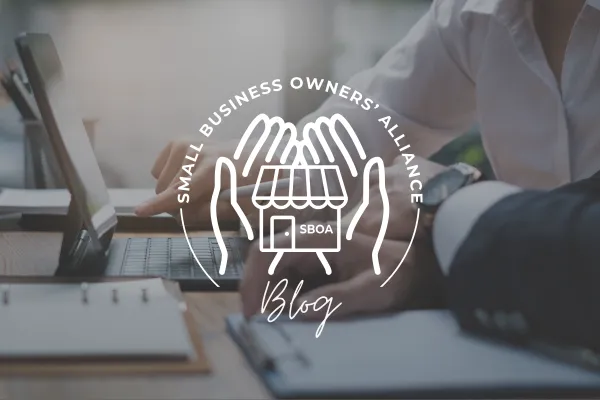
Protecting Your Business: Commercial Liability Insurance for Small Business
Small Business Owners Alliance Home Page | Back to Blog Home - Local Business Insider
Introduction:
Running a small or mid-sized business comes with evolving and layered risks—from employee injuries and lawsuits to cyber breaches and weather-related losses. While commercial insurance offers essential protection, hidden gaps can catch owners off guard. That’s why partnering with a knowledgeable local independent broker is invaluable: they help you navigate nuances specific to your industry, business size, and region.

1. Diverse Types of Commercial Insurance
Typically, businesses begin with General Liability, Commercial Property, and often a Business Owner’s Policy (BOP). But operations frequently need additional coverage such as Commercial Auto for work vehicles, Workers’ Compensation if you have employees, and depending on your situation, perhaps Professional Liability (E&O), Cyber Liability, or Commercial Umbrella to cover additional exposures. These layers ensure every angle is protected.
Trying to choose the coverage you need on your own can lead to insufficient coverage, improper classification, and unnecessary risk exposure.
2. Common Coverage Gaps and How to Address Them
Even well-structured policies can miss critical exposures. A few examples that can cause problems for businesses:
Policies may exclude essential parties, like unlisted subsidiaries, risking denial during a claim.
BOPs often don’t include cyber-incidents or professional mistakes—those require separate endorsements.
Risks like flood, equipment breakdown, environmental liability, or crime commonly demand standalone policies.
Employment-related claims, such as harassment or wrongful termination, aren’t covered unless Employment Practices Liability Insurance (EPLI) is added.
To close those gaps, conduct regular risk assessments, review all exclusions, and align your coverage as your business evolves.
3. Industry-Specific Considerations
Every sector faces unique threats. Here are a few common industry examples that should be considered:
Construction and contracting typically need builder’s risk, inland marinec, and surety bonds.
Retail, food service, hospitality deal with slip-and-fall incidents, product or liquor liability, and cyber vulnerabilities.
Professional services (agents, consultants, brokers) benefit from strong E&O, cyber, and umbrella coverage.
Manufacturing or agribusiness may require product liability, environmental liability, and equipment breakdown protection.
4. Why Local Expertise Helps
While commercial insurance follows national rules, as they apply, local differences matter:
Regional hazard awareness: Local brokers live and work in your community and they’re the first to understand neighborhood risk factors, local weather patterns, and other environmental risks. Local brokers also ensure your business meets state-mandated requirements, like Nebraska’s mandatory Workers’ Compensation for any employer or minimum Commercial Auto liability limits, plus UM/UIM coverage.
Broader carrier access: Independent brokers shop multiple insurers to match coverage, making sure you get the best value. This can provide more competitive rates, as well as access to cover more industries that may be otherwise exclude due to their higher risks
Client advocacy: Brokers work for you and can help with underwriting checks, negotiating renewal terms, and guiding you through claims situations.
Ongoing updates: Annual policy reviews keep your coverage aligned with new risks. It is important to make sure your coverage keeps up with you as your business grows. Regularly reviewing changes and increasing limits is easier with someone who knows your business, like a local agent.

5. Practical Steps for Business Owners
Create a risk map of assets, people, equipment, operations, and contracts.
Audit annually with your broker to identify coverage holes and emerging risks.
Evaluate bundling options: compare BOP vs. tailored coverages like Commercial Package Policy (CPP) offers.
Shop rates smartly: premiums have been rising; comparing multiple insurers can drive savings.
Add targeted endorsements based on risk: crime, cyber, employment practices, equipment breakdown, or excess liability.
Final Thoughts: Make Your Coverage Count
Insurance isn’t just paperwork—it’s a vital risk management tool. Gaps in coverage—whether in liability, data protection, or business interruption—don’t wait until trouble strikes to get noticed. Regularly reviewing and updating your policies ensures they match your evolving business operations and emerging threats
Think of insurance as a living strategy: your assets, services, and staff may change, and so should your protection plan. From named-insured oversights to missing cyber, EPLI, or equipment breakdown endorsements, gaps are more common than most realize—and can seriously threaten your bottom line
So here’s the action step: Don’t let your coverage hold you back. Schedule an annual insurance review, scrutinize your policies for exclusions, update limits, and add targeted endorsements that reflect your current operations. Taking coverage seriously today ensures your business is positioned to survive, and thrive, tomorrow.
Need help reviewing your business insurance options?
Contact us for a complimentary review today!

531-222-2120 | [email protected] | Book a Call With Us
